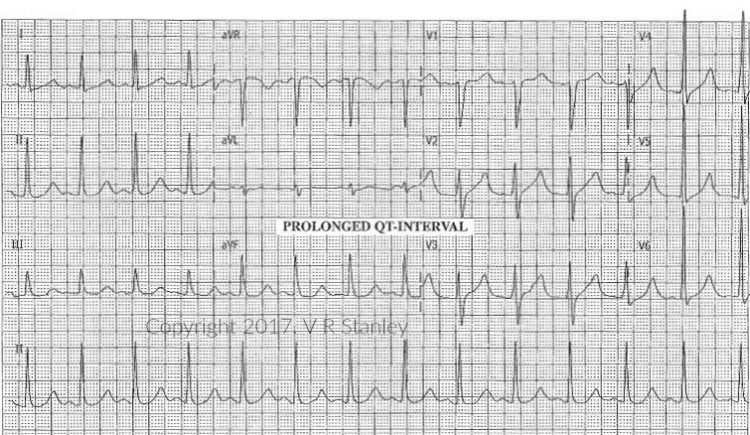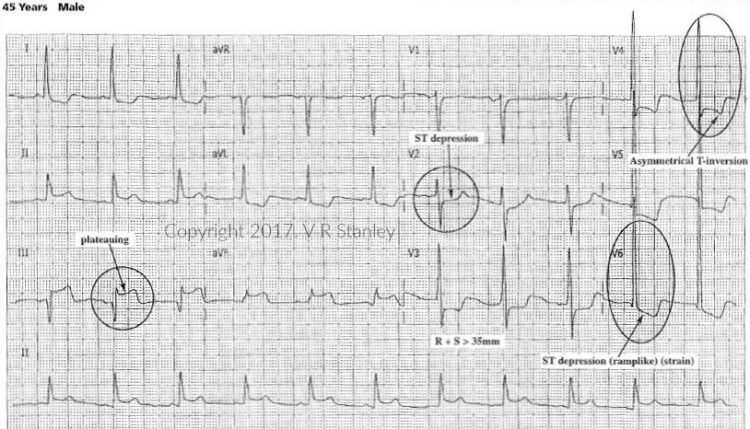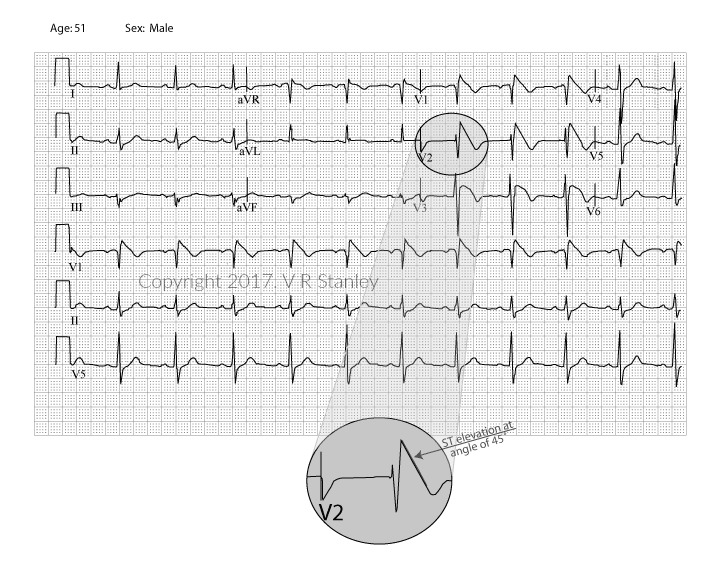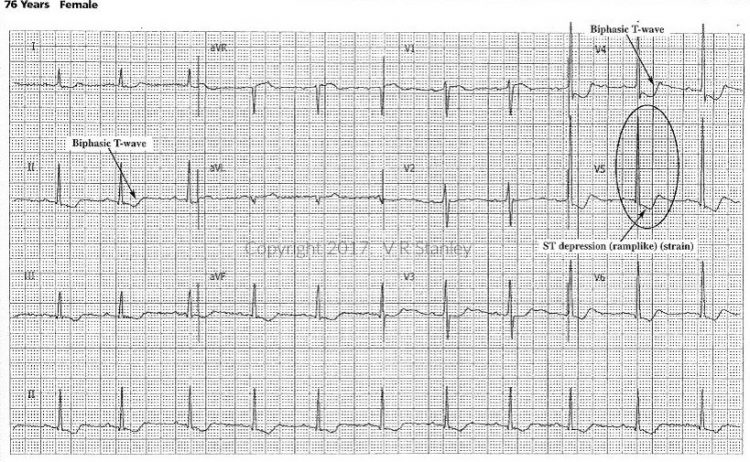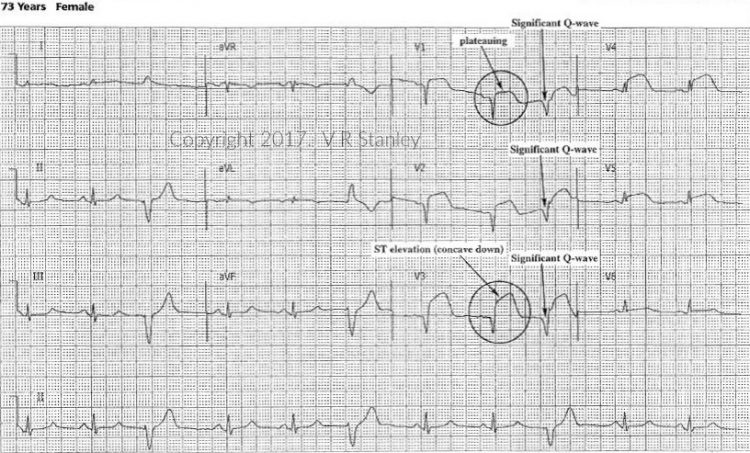TRACING 11
Tracing 11: STEMI?
This tracing exhibits:
- Of note is the absence of LVH and LBBB
- Prolonged QT (QT > 1/2 RR)
- Normal Axis
Summary: Other than prolonged QT, this tracing is normal. However it should be noted that prolonged QT may put the patient at risk for Torsades de Pointes and sudden cardiac death.
No. This tracing does not represent an Acute STEMI.
TRACING 12
Tracing 12: STEMI?
This tracing exhibits a classic LVH with ST-T changes (strain) pattern. However, of great concern are the changes as noted in Lead III (as well as II, avF): ST-T plateauing and ST depression (exaggerated) in Leads V2 through V6, I and avL. Typically the LVH strain pattern may cause the ST depression (ramp-like) distortion of the ST-T segment. But because of the presence of ST elevation in the associated leads II, III and avF and the ST depression (exaggerated) in the reciprocal leads, this tracing is an Acute Inferior MI with LVH .
Yes. This tracing does represent an Acute STEMI.
TRACING 13
Tracing 13: STEMI?
This tracing demonstrates RSR’ in Lead V2 with a biphasic Lead I and small terminal S-wave. The QRS duration is slightly prolonged. Also of note:
- ST elevation (concave down) in Leads V1, V2 and V3
- T-wave inversion or biphasic T-waves in Leads V1, V2, and V3
Summary: Brugada Syndrome. Although this tracing demonstrates characteristics that are consistent with features of a STEMI, they are pseudoinfarction patterns (mimcs). Please know that the computer interpretation for this cardiogram was——————
” Acute MI ”
Clinical correlation and review of old medical records revealed a known diagnosis of Brugada Syndrome and indeed this tracing is not an ” Acute MI”. This is an example of many you will encounter where the computer is absolutely wrong………never practice medicine according to the computer interpretation of the ECG ).
- Of note is the absence of LVH and LBBB
- No. This tracing is not a STEMI.
TRACING 14
Tracing 14: STEMI?
This tracing demonstrates patterns notable as follows:
- Biphasic T-waves
- ST depression (ramplike; strain)
- S + R > 35 mm (where… S= Tallest S of V1, V2, V3 and R = Tallest R of V4, V5, V6; patient is > 35 yo)
Summary: LVH with ST-T changes. Changes noted above are consistent with the LVH pseudoinfarction pattern.
No. This is not an Acute STEMI.
TRACING 15
Tracing 15: STEMI?
This tracing demonstrates the following:
- ST plateauing in lead V1, V2
- ST elevation (concave down) V3, V4, V5 (tombstoning)
- Ventricular Trigeminy Rhythm
- Of note is the absence of LVH and LBBB
Yes. This tracing is an Acute Antero-Lateral-Highlateral MI.
Please click “MARK COMPLETE” or “NEXT”.

